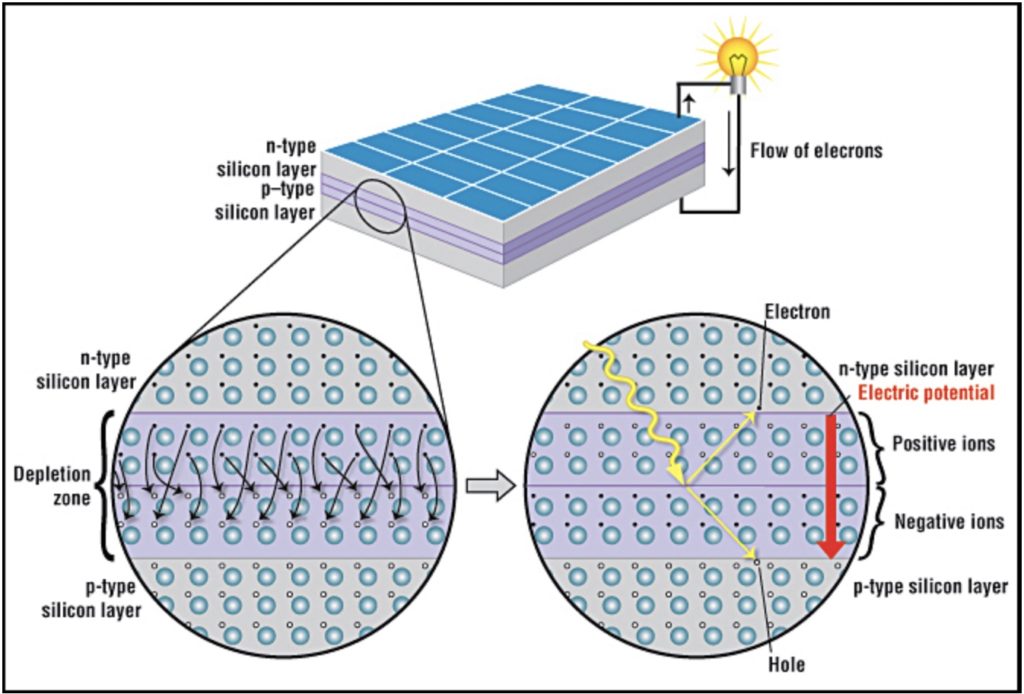🔋 How do Solar Panels Work?
The Chemistry of a Solar Panel
Solar panels are devices that convert sunlight into electricity. They are constructed out of a series of photovoltaic cells. When light shines on a photovoltaic (PV) cell – also called a solar cell – that light may be reflected, absorbed, or pass right through the cell.
A solar cell is made of two types of semiconductors, called p-type and n-type silicon. Basically, when you take layer of silicon and hit it with light, free electrons are released and don’t do much. However, when you lace the silicon with phosphorus, it suddenly has way too many electrons and produces a negative charge (also called n-type). Lacing the silicon with boron does not produce enough electrons and gives a positive charge (p-type). When connected with a conductive wire, these two layers can generate an electric current.
The photovoltaic effect happens when solar cells on the panel absorb photons from the sun to produce an electric current. The resulting energy generated from this effect allows electrons to be knocked loose and released into the electric field, then, a directional current can pull these free electrons to control where the electricity goes.
When a solar power system generates electrical energy, it can be used to power your household loads (like charging your device), be fed to the grid, or it can be stored in battery banks.
We can thank Edmund Becquerel, a 19-year old French physicist, for discovering the first photovoltaic effect in 1839. To learn more, visit Chem Matters by the American Chemical Society!

